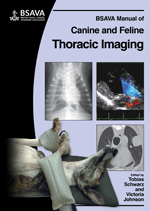
Full text loading...

Please note. The new 2nd edition of the BSAVA Manual of Canine and Feline Thoracic Imaging is now available here.
Nuclear medicine, or nuclear scintigraphy, is a branch of medical imaging that uses radiopharmaceuticals (pharmaceuticals labelled to radioactive atoms) to evaluate physiological processes and diagnose a variety of diseases. Nuclear medicine differs from other imaging modalities in that it shows primarily the function of the system being investigated, as opposed to its anatomy. The chapter focuses on Indications; Restraint and patient preparation; Technique.
Basics of thoracic nuclear medicine, Page 1 of 1
< Previous page | Next page > /docserver/preview/fulltext/10.22233/9781910443088/9781910443088.5-1.gif

Full text loading...








